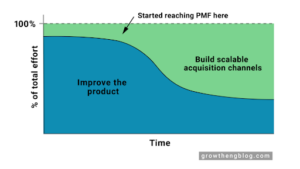Not everyone is a pro at staying organized, but it’s easy to see the importance of it. Imagine walking into a grocery store that doesn’t break aisles into sections, like spices and cleaning supplies, or stock similar products near each other. A shelf on aisle two might contain gourmet olives, dish soap, and almond flour. Not only would you as the shopper have a difficult time navigating the store independently, but employees wouldn’t be able to easily train new staff on where to find existing items or stock new products.
In order for anyone to know the breadth and depth of what they have access to (grocery products), those items need to be organized (aisles and shelves), and the logic documented (aisle signs) for easy discovery. This same approach applies to the data in a business’s tech stack. In action, it’s called data cataloging.

In this guide, you’ll learn what data cataloging is, the business challenges it addresses, why it’s necessary to scale operations, and what tools exist to help organize large data sets.
What is data cataloging?
Well-structured data organizations make their columns, tables, and other infrastructure elements easy to understand and locate for all users. Data cataloging is the process of tagging, labeling, and documenting all your existing and new data assets.
Business challenges addressed by data cataloging
Here are a few examples of common struggles businesses have prior to implementing data cataloging best practices.
-
Lack of transparency: “Where did this customer data come from?”
-
Inconsistency in processes and business vocabulary: “I saved the data in the Excel file labeled clients_Midwest_manufacturing_v2.”
-
Search and discoverability difficulties: “Where can I find the results from our latest A/B test?”
-
Bottlenecks in preparing data for analysis: “I pulled in the wrong data set, so we need to wait for the right one to sync before I can start on the project.”
-
Manually intensive debugging: “I’m having trouble finding the table with the missing values.”
What are the benefits of data cataloging?
Reliable data is a company’s most valuable asset, as it impacts all parts of the business. For example, these common use-cases illustrate how teams company-wide rely on data to determine their next steps.
-
In an email A/B test, open and click-through rates help marketing determine which call-to-action results in the best conversion.
-
In-app behavioral data reveals patterns that enable analysts to identify UX/UI improvements.
-
Data from across the org is what executives rely on to develop the business’s product roadmap, allocate budgets among departments, and make hiring decisions.
A logical, consistent cataloging framework plays a key role in maintaining data observability and data reliability. When it comes to data observability, being able to monitor the health of your data means nothing if it’s not structured in such a way that makes it easy to locate a specific table in a hurry or immediately understand what you’re looking at (i.e. the source it came from and what the data is being used for). Ensuring data reliability is less challenging when you have a clear, well-organized view of your data pipeline. It’s easier to locate the tables that include duplicate columns or the row where a missing value needs to be inserted.
Beyond these core components of a healthy data infrastructure, there are everyday business benefits that arise from data cataloging as well.
Increased efficiency: Tagging transforms, labeling data, adding table descriptions, and creating a thorough inventory of the data warehouse will help all team members search for and locate information quicker. Tags, for example, allow you to group data by project, team, status, etc. so it’s easy for any user to get business questions answered without delay.
Scalable data expansion: The data cataloging system will be developed internally so it can take into account a business’s unique tech stack, products, services, customers, etc. This ensures that, as new applications are implemented or new products are launched, operations are able to scale as new data flows in.
Adoption of a shared vocabulary: Creating a system to label and organize your data — that everyone buys into and uses — facilitates better collaboration thanks to a shared understanding of business information.
Easy team training: Documentation detailing how your data catalog is structured and the process for organizing new data imports makes it substantially easier to onboard new team members. Likewise, you don’t need to fret when a key employee leaves. Although they will take institutional knowledge with them, your data team will retain access to everything they need.
High return on investment: When your team uses data better and more efficiently, that saves time (and money) and produces more reliable analyses. This in turn leads to better decision-making, which drives profitability.
How to easily catalog and organize your data with Mozart Data
Mozart Data’s modern data platform provides out-of-the-box data cataloging tools like tagging, table and column descriptions, and other features that help keep data organized so anyone can find and work with the information they need. Our intuitive tools make it easy for your team to get started quickly and without difficulties.
Your Mozart dashboard enables you to spend your valuable time and energy on project work, not searching through the data warehouse. You can favorite tables to have them displayed at the top of the dashboard alongside your 10 most recently viewed tables. That way, you can quickly access the data you work with most.
Contact us to schedule a demo to learn more about Mozart’s data cataloging tools and how our modern data platform can help your business store, transform, organize, and confidently work with large data sets in a scalable way.


